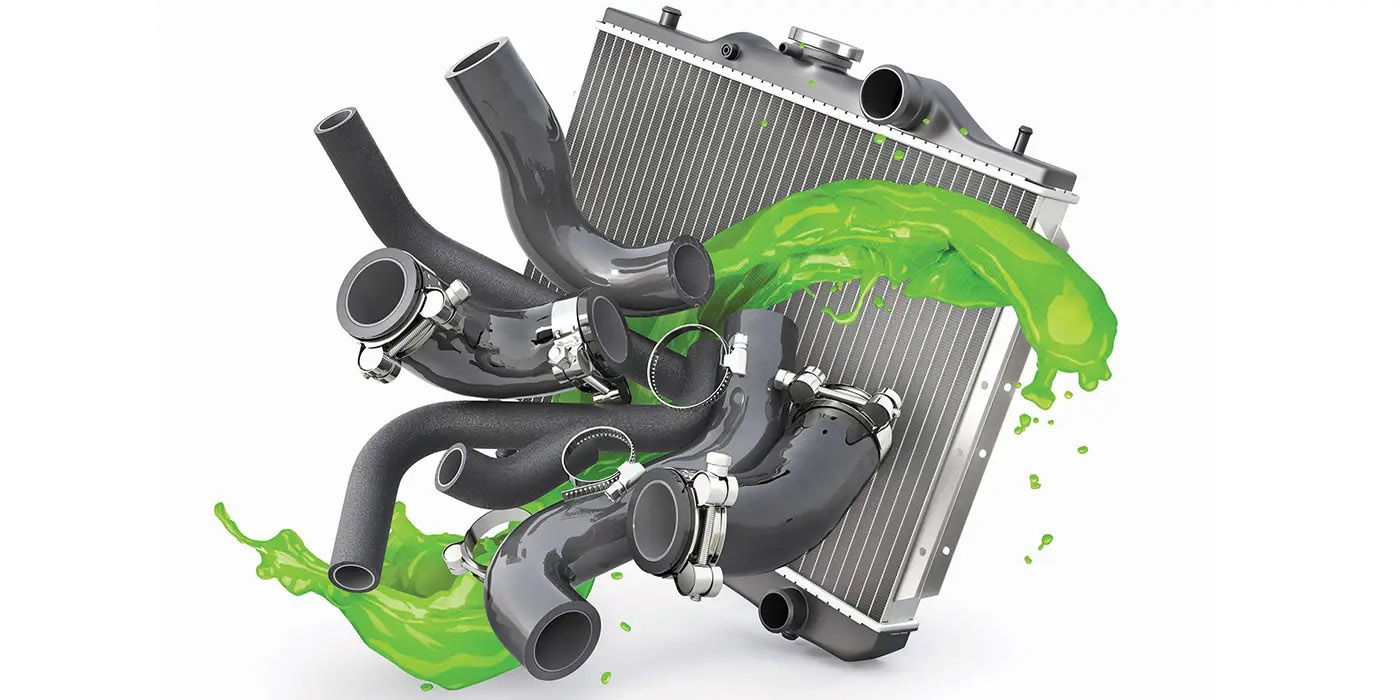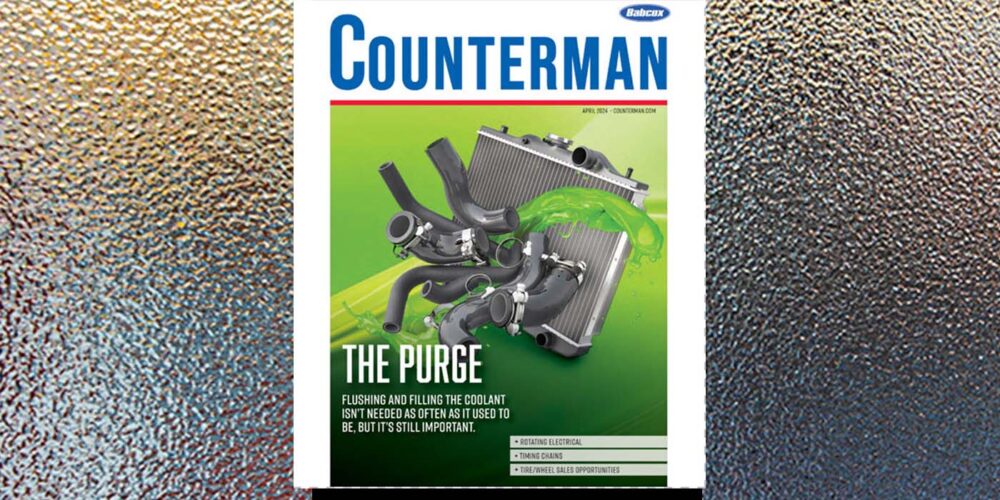There are two basic selling scenarios for shocks and struts. One is when a vehicle’s original equipment shocks or struts are worn out or damaged and are being replaced to restore like-new ride control, handling and driving safety. It’s essentially a repair job where the OEM parts are replaced with equivalent aftermarket parts. There’s no upsell or upgrade involved, and the price of the replacement parts is often more important than anything else. This type of sale usually only takes place after a vehicle has racked up considerable mileage and wear, and may be a once in a vehicle’s lifetime replacement sale depending on the age, mileage and value of the vehicle that is being repaired.
 The other scenario is when original equipment shocks or struts (or other aftermarket dampers) are replaced to upgrade ride control, handling performance or load carrying capability. In this type of situation, price is not as important as the brand name recognition of the product and the features and benefits the new shocks or struts will provide for the customer’s vehicle. This type of sale can occur at any point in a vehicle’s life, whether it is brand new or a 50-year-old classic. It also requires much more conversation with your customer to figure out exactly what they want, what their expectations are and which brand and type of shocks or struts to recommend for their vehicle.
The other scenario is when original equipment shocks or struts (or other aftermarket dampers) are replaced to upgrade ride control, handling performance or load carrying capability. In this type of situation, price is not as important as the brand name recognition of the product and the features and benefits the new shocks or struts will provide for the customer’s vehicle. This type of sale can occur at any point in a vehicle’s life, whether it is brand new or a 50-year-old classic. It also requires much more conversation with your customer to figure out exactly what they want, what their expectations are and which brand and type of shocks or struts to recommend for their vehicle.
Motorists who are interested in ride control upgrades often do much of their own research online. They’ll visit websites and forums where other vehicle owners have posted their comments regarding various kinds of shocks and struts. They may visit shock manufacturer’s websites for more detailed product information and recommendations. So by the time this type of customer walks into your store, they may have a pretty good idea of what they want and why. They may have some additional questions or ask what you would recommend, but they are essentially ready to buy. There’s no hard sale required to make the sale.
Contrast this with the typical motorist who probably doesn’t realize his shocks or struts may be worn out and are overdue for replacement. Most consumers don’t realize that shocks and struts are wear components just like brake pads and tires. They have a limited service life that depends on time, mileage and usage. Parts that wear out eventually have to be replaced, yet many vehicles end up in the salvage yard with their original equipment struts and shocks still in place. That doesn’t mean these parts went the distance. It means most people don’t notice the gradual deterioration in ride control that occurs as the miles add up. It also means few motorists recognize the importance of replacing worn shocks and struts to maintain ride quality, good handling, steering stability, traction and driver safety. It also affects tire wear, too!
The Safety Triangle
Shocks and struts are a key component in the “Safety Triangle.” The three legs are Steering, Stopping and Stability. Just as a three-legged stool needs all three legs for support, so too do all vehicles need good steering, stopping and stability for safe driving.
Steering refers to the condition of steering linkage components such as tie rod ends and idler arms. It also includes the upper strut mounts, which can affect steering effort, steering return, steering feel and noise, too. Worn steering linkage components that allow play may allow a vehicle to wander at highway speeds. A tie rod or idler arm failure can be especially dangerous because it can cause a loss of steering control.
Stopping refers to the brakes and the brake system’s ability to bring a vehicle to a quick, controlled stop. Worn brake pads or shoes, or serious problems (such as leaks) with the calipers, wheel cylinders, master cylinder, brake lines or ABS system can create a potentially dangerous situation. Shocks and struts play a role here by preventing wheel hop when braking on rough surfaces. This improves traction and reduces the stopping distance of the vehicle.
Stability refers to the ability to manage the motions of the suspension, to limit body roll and sway when cornering or driving in crosswinds, to limit nose dive when braking, and to keep the tires in firm contact with the road for better steering control, braking and traction. The shocks and struts are the key components in this part of the safety triangle, yet many people don’t recognize the role they play in overall safety. What the shocks and struts do is create resistance and friction that dampens the motions of the suspension as it responds to the road and body motions.
Telling Is Selling
Consumer education, therefore, is absolutely essential to sell replacement shocks and struts. If a motorist doesn’t know that shocks and struts are wear components that need to be inspected and eventually replaced, they probably won’t be buying any replacement shocks or struts anytime soon — unless, as we mentioned earlier, they are looking for a performance or load carrying upgrade, or a technician has discovered their vehicle needs new shocks or struts and is recommending they be replaced.
Consumers are often leery of being told they need new shocks or struts for fear they are being taken advantage of and are being told they need repairs they don’t really need. Replacing a weak set of shocks or struts is not a required repair according to MAP (Motorist Assurance Program) guidelines. However, such repairs can be recommended to restore like-new handling. Repairs would be considered necessary if the shocks or struts are damaged (bent or broken), loose or missing altogether. In the case of struts, that would include a bent strut shaft (which might be the result of collision or curb damage), a cracked or broken spring mount or strut housing, or a damaged or worn upper strut mount.
A car won’t start with a bad battery, and it won’t stop if the brakes are shot. But the consequences of bad shocks or struts are often not so obvious to many motorists. Even so, the consequences are there. The tires may be wearing unevenly (a cupped wear pattern is a classic symptom of uncontrolled tire bounce due to weak dampers). A bent strut may prevent the wheels from being properly aligned and create a steering pull and/or uneven tire wear. Weak dampers also can make a vehicle unstable in heavy crosswinds or when driving on twisting, curvy roads. Weak dampers also may allow the suspension to bottom out or bounce excessively when passing over potholes and dips in the road. And as we mentioned before, lack of proper ride control may allow loss of traction when braking hard on rough roads.
Any customer who needs new shocks of struts is a potential customer for an upgrade, especially if they drive a performance or sporty vehicle of some type, or use their vehicle for towing or off-roading.
Standard replacement dampers are fine for everyday driving, but for spirited driving, racing, towing or off-roading, some type of performance shock/strut or overload shock/strut may be recommended. A set of high-pressure gas monotube struts may be just the thing to complement a performance tire/wheel package.










